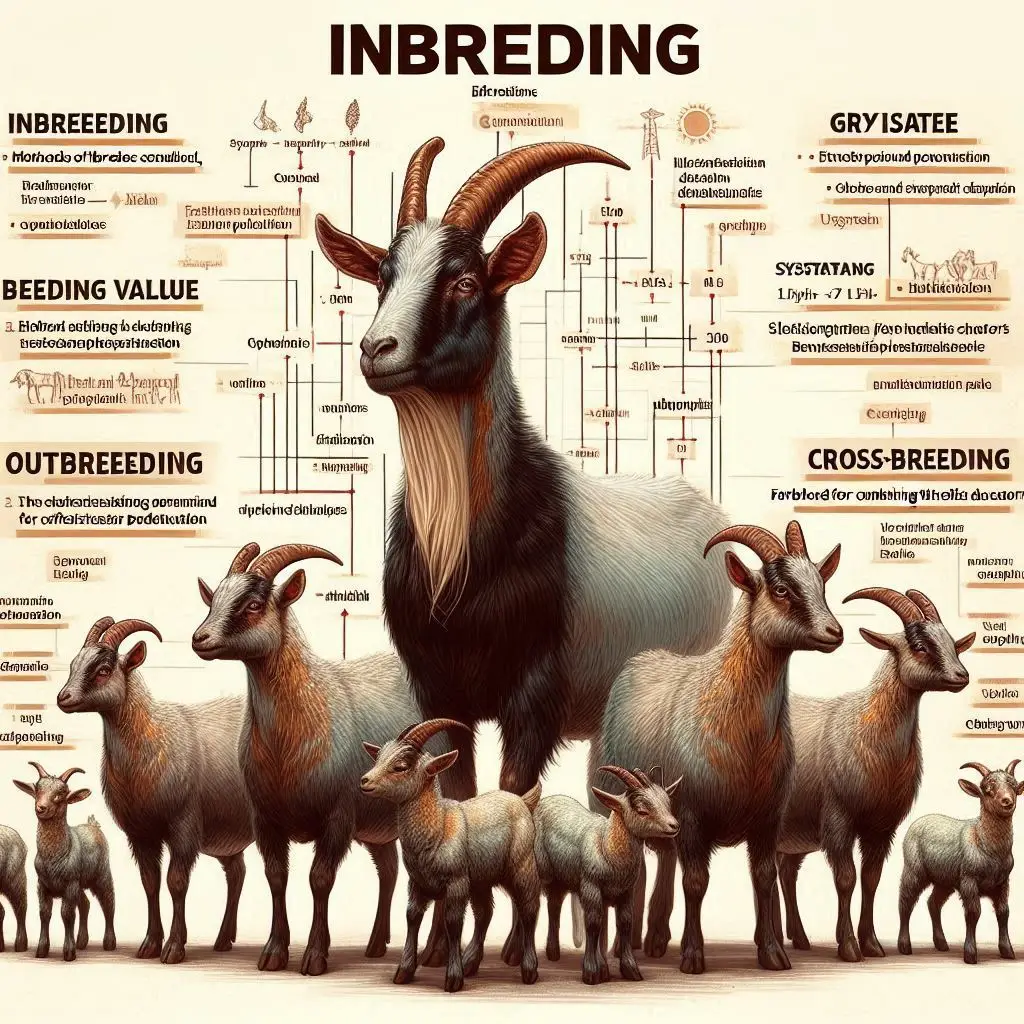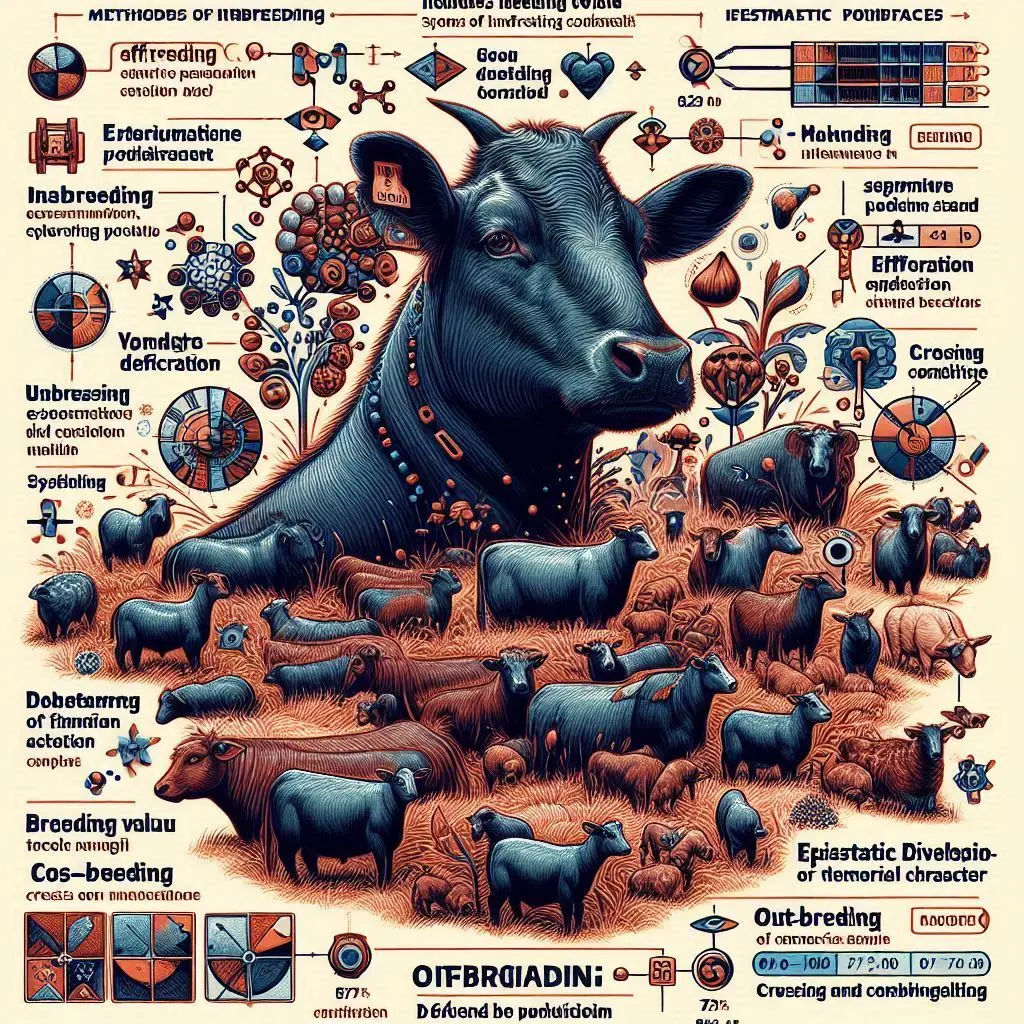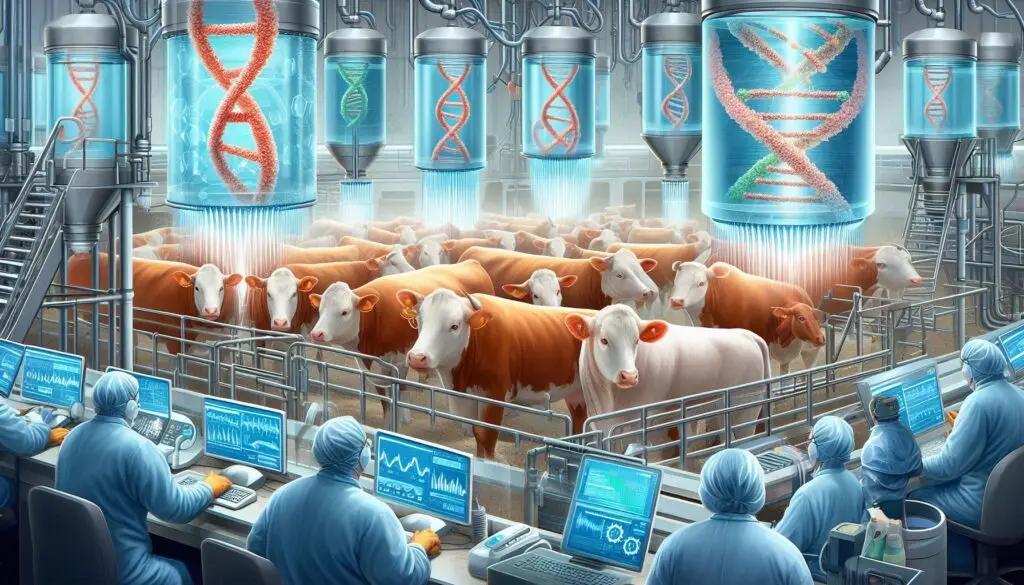Crossing Inbred Lines

Introduction
Crossing inbred lines is a powerful technique for commercial crop production. By strategically mating carefully selected inbred lines, breeders can capitalize on the complementary traits of the parent lines and achieve improved performance and productivity in the commercial setting. This article will guide you through the process of crossing inbred lines, evaluating general and specific combining abilities, and breeding for threshold characters to optimize your crop breeding program for success.
Crossing Inbred Lines for Commercial Production
The process of crossing inbred lines for commercial production involves several key steps:
1. Selection of Inbred Lines
Identify inbred lines with desirable traits relevant to the commercial goals, such as high yield, disease resistance, or specific quality characteristics.
2. Creation of Inbred Lines
Develop inbred lines through successive generations of self-pollination or mating between closely related individuals to fix specific traits.
3. Evaluation and Testing
Conduct thorough evaluations and testing of the inbred lines to ensure stability and expression of desired traits.
4. Crossing Strategy
Implement a carefully planned crossing strategy, considering the genetic diversity and complementary nature of the selected inbred lines.
5. Hybrid Vigor Utilization
Leverage hybrid vigor (heterosis) resulting from the cross to achieve enhanced performance, such as increased yield, improved disease resistance, or other commercially valuable traits.
6. Commercial Scale Production
Implement the selected inbred lines on a larger scale for commercial production, ensuring that the hybrid offspring retain the desired traits from both parent inbred lines.
Advantages of Crossing Inbred Lines
By following this process, breeders can take advantage of the benefits of crossing inbred lines, including:
- Heterosis: Utilization of hybrid vigor for improved performance and productivity.
- Trait Combination: Ability to combine specific and desirable traits from different inbred lines.
- Consistency: Provision of a more consistent and uniform product compared to open-pollinated varieties.
Example: Broiler Chicken Production
An example of this approach can be seen in broiler chicken production. Breeders start by selecting and breeding separate inbred lines of broiler chickens for specific traits such as rapid growth, high meat yield, and efficient feed conversion. Over several generations, they create highly uniform and genetically pure lines through close mating of individuals within each line, helping to fix the desired traits.
Understanding Combining Abilities
Combining abilities refer to the genetic ability of different parents or lines to combine and produce superior offspring with desirable traits. Understanding and utilizing combining abilities is crucial for predicting the performance of hybrid crosses and selecting the best parental combinations to achieve desired outcomes. There are two main types of combining abilities:
General Combining Ability (GCA)
General Combining Ability (GCA) represents the average performance of a parental line across various hybrid combinations. It reflects the additive genetic effects, and individuals with high GCA are considered good general combiners, meaning they consistently pass on favorable genes to their offspring.
Selection Process for GCA
- Objective: Identify individuals with consistently favorable genes that contribute positively to the performance of their offspring in various combinations.
- Process: Evaluate individuals across multiple crosses to assess their average genetic contribution. Individuals with high GCA are selected, indicating they consistently pass on desirable traits.
Example of GCA
An example of this would be selecting corn plants based on their consistent performance in yield across various cross combinations.
Advantages of GCA
- Useful for identifying individuals with overall high genetic potential.
- Effective for traits influenced by additive genetic effects.
Specific Combining Ability (SCA)
Specific Combining Ability (SCA) is specific to a particular combination of parents. It reflects the non-additive genetic effects that arise when specific alleles from two different parental lines interact to produce superior or inferior traits in the hybrid offspring. SCA helps identify which pairs of parents will produce the best hybrids.
Selection Process for SCA
- Objective: Identify individuals that exhibit strong, positive interactions with specific mating partners, leading to superior performance in certain combinations.
- Process: Conduct specific cross combinations and assess the performance of offspring. Individuals showing high SCA in specific combinations are selected.
Example of SCA
An example of this would be identifying two specific wheat varieties that, when crossed, consistently produce offspring with superior resistance to a particular disease.
Advantages of SCA
- Identifies individuals with specific compatibility for certain crosses.
- Important for non-additive genetic effects and interactions.
Utilizing Combining Abilities in Plant Breeding
A diagrammatic plan for utilizing combining abilities in plant breeding can involve the following steps:
Step 1: Selection of Parental Lines
Identify the traits of interest and determine which parental lines possess desirable traits. Evaluate the GCA of potential parent lines for these traits through multiple trials and experiments. Select parent lines with high GCA for the target traits.
Step 2: Hybridization
Create various combinations of the selected parental lines by crossing them to generate hybrids. Record the performance of each hybrid for the traits of interest in field trials.
Step 3: Data Collection and Analysis
Collect data on the performance of each hybrid, including yield, disease resistance, quality, or any other relevant traits. Analyze the data to assess which hybrid combinations show the best performance for the target traits.
Step 4: Estimation of SCA
Use statistical methods such as diallele analysis to estimate the SCA for each hybrid combination. Identify which hybrid combinations have significant positive SCA for the traits of interest.
Step 5: Selection of Best Hybrids
Select the hybrid combinations that exhibit the best overall performance, considering both GCA and SCA. These selected hybrids are expected to consistently produce superior offspring with the desired traits.
Step 6: Commercialization and Further Breeding
After identifying superior hybrid combinations, advance them for commercial production or use them as parents in subsequent breeding programs. Continue to refine and improve the breeding population by incorporating new parent lines with high GCA and SCA.
Breeding for Threshold Characters
Threshold characters are traits with binary expression influenced by multiple genes, falling into distinct categories based on a threshold (e.g., disease resistance). Breeding for these characters involves several steps:
1. Identification
Recognize traits with binary expression.
2. Genetic Understanding
Understand the involvement of multiple genes.
3. Quantitative Genetics
Apply methods to predict expression.
4. Marker-Assisted Selection (MAS)
Use molecular markers for precise selection.
5. Population-Level Analysis
Study population-wide genetic factors.
6. Breeding Strategies
Develop strategies to manipulate underlying genetics for trait improvement.
Conclusion
Crossing inbred lines for commercial production is a powerful technique that allows breeders to capitalize on the complementary traits of parent lines and achieve improved performance and productivity. By understanding and utilizing combining abilities, breeders can identify the best parental combinations and produce superior hybrids. Additionally, breeding for threshold characters is crucial for improving specific traits influenced by multiple genes. By following the strategies outlined in this article, you can optimize your crop breeding program for success and deliver high-performing, commercially viable products to the market.
For more pearls of Vets Wisdom:
https://wiseias.com/partitioning-of-food-energy-within-animals/





Responses